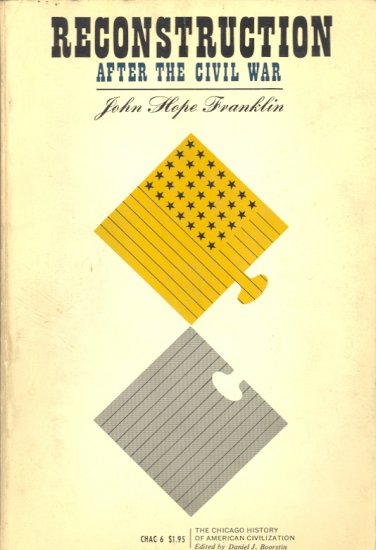

For instance, he emphasizes the fact that the whites were in complete control in the South for two yearsĪfter the war that they were never outnumbered by Negro majorities in any state except, briefly, in South Carolina that they made their weight felt at all times that the duration of the "Radical" or "carpetbag" Well known as the author of the standard history of the American Negro, strikes at a number of vulnerable stereotypes.


Franklin, chairman of the History Department of Brooklyn College, already John Hope Franklin's "Reconstruction: After the Civil War" fills this yawning gap, and with notable balance and judicious temper, tells an old story in a new light. Reflecting modern scholarship and current ideas, has been painfully lacking. A few, like Eric McKitrick, have published important studies modifying the traditional view. While American thought in general was rejecting racist ideas of the inferiority of the Negro, with their corollaries of segregation, disfranchisement and discrimination, our historiesĬontinued to treat the attempt to establish Negro equality during Reconstruction as a mistake, a crime, or even an absurdity and to cast the champions of equality in the role of villains.įor some time now historians have recognized this anomaly increasingly they have called for a new version of Reconstruction history. Or at least two or three decades, the available histories of the Reconstruction period, following the Civil War, have presentedĪ conspicuous case of cultural lag. Still compelling are his arguments concerning the brevity of the North’s military occupation of the South, the limited amount of power wielded by former slaves, the influence of moderate southerners, the flaws of the constitutions drawn up by the Radical state governments, and the reasons for the downfall of Reconstruction.NovemFreedom Without Equality By DAVID M.

What has not changed, however, is the foundation Franklin has laid. In addition, the extensive bibliography has been thoroughly revised. New are Franklin’s references to important, later texts that enrich the original narrative. In this edition Franklin has updated his work to acknowledge the enormous body of research and scholarship that followed in the wake of the first edition. Ever since its original publication in 1961, Reconstruction after the Civil War has been praised for cutting through the controversial scholarship and popular myths of the time to provide an accurate account of the role of former slaves during this period in American history.


 0 kommentar(er)
0 kommentar(er)
